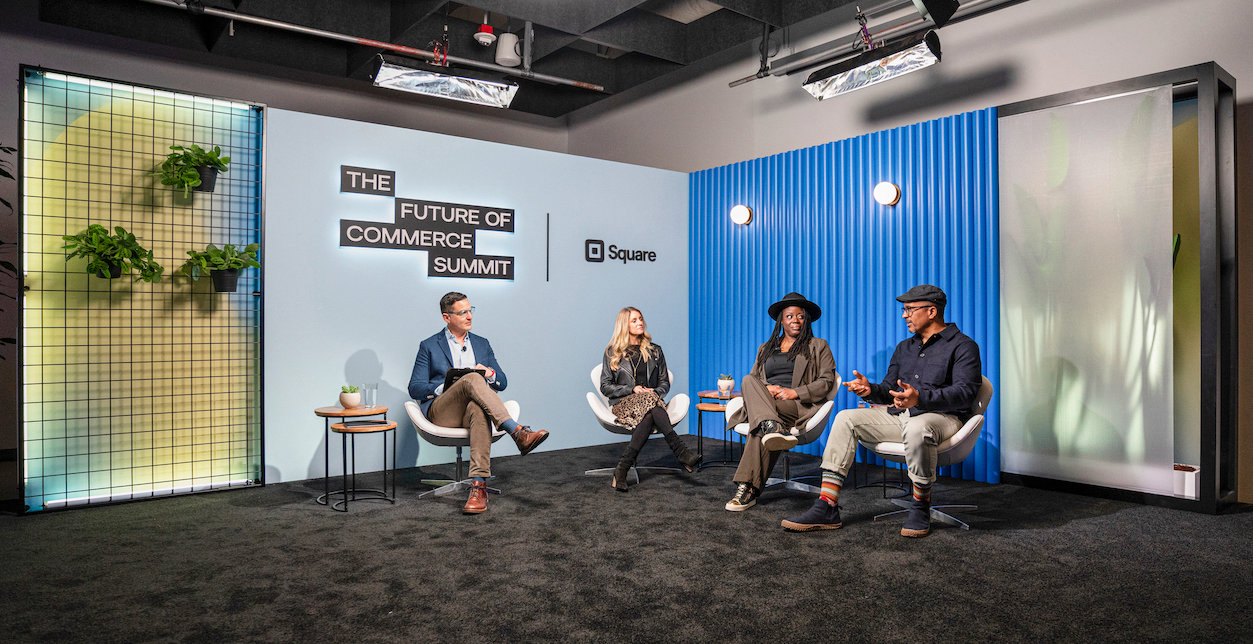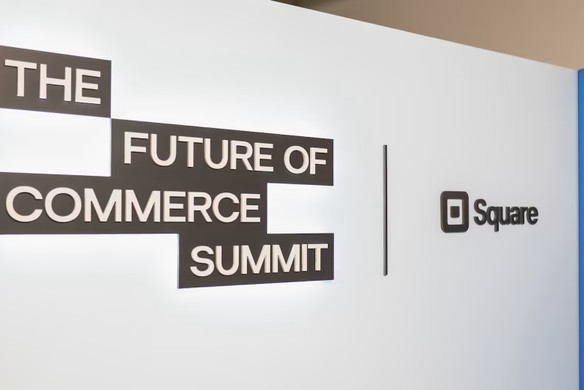Table of contents
The future of commerce is fast and flexible, and for the business leaders I spoke with at our inaugural Future of Commerce Summit, it has no bounds.
To dig deeper into the top commerce trends we uncovered in our 2023 Future of Commerce report, I sat down with two incredible Square sellers — Keba Konte, Founder and CEO of Red Bay Coffee Company and LaToyia Mays, Founder of The Laya Center — to discuss how they’re building for the future. The conversation was held at the Square Oakland office, and moderated by Guy Raz, acclaimed radio and podcast personality, author, and creator of How I Built This.
Here’s a recap of my top takeaways from the Future of Commerce Summit that you can apply directly to your business, no matter your stage or industry. Watch the full event recording below, and read the report to learn more about the top commerce trends we discussed.
Diversification leads to business growth.
Business owners are inherently resilient, and they’re redefining industry verticals to bring more value and convenience to customers. Our sellers inspire me every day by setting this trend and using Square to make diversification possible. This year, our Future of Restaurants report found that two out of three restaurants now consider noncore offerings essential to diversifying revenue. And on average, 21% of a restaurant’s revenue comes from these noncore products and services.
At the event, I spoke with Keba Konte about what diversification means at Red Bay, a Bay Area institution that sells artisanal coffee and other goods in-store, online, and through wholesale distributors. Konte is growing his customer base by selling his delicious coffee and merchandise in every channel they frequent and find convenient. Guy Raz described this trend and Konte’s business approach perfectly: “You’re able to be, in a sense, everywhere all at the same time.”

Adding multiple revenue streams allows you to future-proof your business, ensuring that you’re not solely dependent on one source to make or break things. “How I like to think about it is that each of our channels is interdisciplinary,” Konte explained to me. “They help support one another. When we create cafes, we’re creating an immersive space where you can really have an authentic experience with our brand. You’re hearing the music, you’re enjoying the plants, and you’re just in it.”
For LaToyia Mays, building The Laya Center into a multihyphenate business started with understanding her customers and what they enjoyed about her main offering so she could identify where to expand. Connecting with customers lets business owners explain new offerings directly, encouraging people to give new things a try. “We’re building relationships [with customers],” she said. “By educating them, they become open to the other things that we offer.”
Automate to have time to innovate.
Automation is often misunderstood. Automating everyday tasks can give employees opportunities for career growth since they’re freed up to take on more impactful work. It can immensely help businesses looking to increase retention by creating more long-term career paths for people. In our research, 99% of restaurateurs shared that automating their back-office routines allows them to have more support for front-of-house operations, like a better customer experience.
“We’re elbow deep in automation already,” said Konte, who expanded Red Bay into over seven locations. “And with the challenge of service labor getting harder, we’re not only relying on hardware automation, but apps and ordering ahead and back ordering. All of that.”
Embracing automation lets you give customers the option to self-serve, exactly where they expect it. Customers don’t want to wait in line or be forced to talk to people unnecessarily, a trend that has accelerated since the pandemic. From sending appointment reminders to checking if an item is in stock, automation makes it easier for customers to connect with your business while carving out opportunities for your team to innovate.
Follow what your customers want.
At the Summit, I was inspired by the way Mays uses tools like Square Marketing and Square Loyalty to understand how customers interact with each part of her wellness center so she can offer services that speak directly to them. Communicating with customers allows you to understand what they truly want. Our research found that 86% of consumers want to communicate with the businesses they frequent, something the sellers I spoke with are investing in so they can craft meaningful experiences.

“Do they come in for just services or are they leaving with products every time? It’s about figuring out how you want your customer to experience you, and then working backwards to create these branches,” Mays said at the event.
Choosing the right software is the best way to plug yourself into these invaluable customer insights that will then lead you to create the branches Mays described. “We are very grateful for [Square] reports to try to figure out what’s selling best, so that we can keep the relationship with the people up front,” she shared.
As the digital landscape changes, businesses need to analyze information constantly to make informed business decisions. “You have to have your ear to the ground,” said Konte, as he described how analyzing customer data collected through Square enabled him to design a ready-to-drink line of canned coffees with oat milk. His data showed that oat milk was what his customers were consuming more of, so it allowed him to stay ahead of the trend and provide that offering in a completely new format.
“We have the data, we know what people like, we know what they’re ordering. We see these trends changing, so we’re able to take those experiences and fold them in,” Konte said.
At Square, we do the same thing that sellers like Konte do. We observe how customers are using our products so we can make them better. We keep an ear to the ground and take all that in to make sure we’re building tools that help entrepreneurs execute on their vision.
Explore new channels that customers gravitate toward.
It’s crucial to understand where your audience is spending time and then show up in those channels. For many types of businesses, mobile is the best place to focus attention. On the Square platform, we saw that mobile payments rose 117% this year, driven in part by growth in online and social media channels.
The Laya Center strategically sells across channels to reach different audiences. “On Instagram, it’s about bright pictures and fun food,” Mays described. “And then on Facebook, we give a lot of information. We expanded to Twitter because we have sports teams come in, so we talk about sports-related things there.”
Like Mays, it’s important to highlight your business on the channels your customers are using. And then get out of your comfort zone so you can try new things and scale what works. “When you’re creating a brand and aim to continue to grow, it gives you license to do a lot of things,” Konte said. “Once you have the trust of your community, you can introduce a lot.”
At Square, we build tools to power businesses through every opportunity and every challenge ahead. “Me and Square grew up together in business,” Mays said at the summit. “I remember when we first started … and now we’re using Square Payroll, and we’re using Marketing, Loyalty, Loans, and all those things.”
Listening directly to business owners ensures we’re giving them the tools they need to execute on their vision. It was inspiring to learn from these innovators, and I can’t wait to see how they keep putting these trends into motion this year.

See all the 2023 commerce trends, and dive deeper into vertical-specific trends with our Future of Retail and Future of Restaurants reports.
![]()










